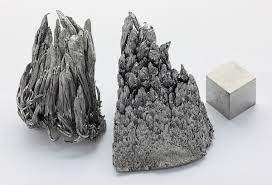History.
The element yttrium boasts a fascinating past, intertwined with scientific discovery and a touch of geographical intrigue. Its story begins in 1787, when a peculiar black rock was found near the Swedish village of Ytterby. This seemingly ordinary stone sparked the curiosity of chemist Johan Gadolin, who embarked on a journey to unlock its secrets.
In 1794, Gadolin's meticulous analysis revealed a previously unknown "earth" within the rock, later named "yttria" after its place of origin. However, yttria wasn't a single element, but rather a complex mixture. Over the next century, a scientific detective hunt unfolded, with chemists like Carl Mosander meticulously separating and identifying no less than nine individual elements hidden within yttria, including the now-familiar terbium and erbium.
This remarkable saga highlights the ever-evolving nature of scientific understanding. What began as a single "earth" ultimately led to the discovery of multiple unique elements, each with its own properties and potential applications. While the full story of yttrium's history is rich and layered, this glimpse offers a taste of the element's fascinating journey from obscurity to scientific marvel.

